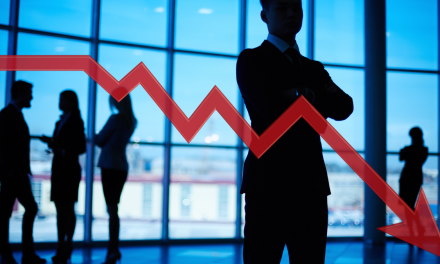We see the gap between OOH and digital narrowing and Analytics & Performance analytics which were non-existent in any OOH campaign are now becoming an integral part of any OOH campaign, says Elmer Dsilva, Founder & CEO of Mumbai-based Wrap2Earn, in this interview with MartechAsia.
Key takeaways:
- OOH forms or should form part of every marketeer’s marketing mix. The OOH industry now allows advertisers to choose from a plethora of OOH advertising mediums to showcase their brand.
- We see the gap between OOH and digital narrowing. Analytics & Performance analytics which were non-existent in any OOH campaign are now becoming an integral part of any OOH campaign.
- One of the primary benefits of AI in DOOH is the unlocking of predictive analytics to allow us to make better decisions on-the-fly.
- Holographic technology has proved itself to be an excellent addition to OOH advertising due to its ability to grab attention quickly.
- With all the data collected via the aid of technology, tools like Artificial Intelligence and Machine Learning can help churn out interesting patterns from these huge datasets. Augmented Reality is another technology that can be integrated with OOH campaigns to gamify and enhance potential customer engagement with OOH medium.
The global digital OOH (out-of-home) advertising market is expected to grow at a CAGR of 12.03% during 2021-2026 (IMARC Group report). The growth potential is largely driven by the dynamic communication displayed on digital signage installed at airports, railway stations, medical waiting rooms, malls, retail stores, movie theatres, cabs & taxis, and on major roadways. On the other hand, hologram digital OOH (DOOH) is becoming the next hot cake in the industry as it is considered a great asset to brands’ experiential marketing efforts. 3D hologram further empowers this asset as an irresistible one that brands use across all of their marketing campaigns, making brands more memorable. OOH has truly emerged as the genie for targeted advertising. In short, if companies aren’t considering OOH, they are missing out on important leads.
Elmer Dsilva, Founder & CEO of Mumbai-based Wrap2Earn, a tech-first cab branding company, speaks on OOH, and how technologies like digital, hologram, AI, ML, data analytics and more are transforming the industry for a better marketing experience. A disruptive OOH media marketplace, Wrap2Earn is creating a world where brands will have complete control over their OOH advertising, including where they want to expose their brands.
OOH is personalisation-driven advertising mode. What are some of the challenges, opportunities and possibilities that technology opens up for OOH?

Change is the only constant. Like everything else, the OOH industry has been and will keep evolving with time. The use of technology and data to deliver contextual messaging is now at the heart of every advertiser’s advertising objective and media owners need to adapt at every stage or they run the risk of being left behind.
OOH forms or should form part of every marketeer’s marketing mix. The OOH industry now allows advertisers to choose from a plethora of OOH advertising mediums to showcase their brand. An advertiser no longer shoots in the dark when it comes to planning an OOH campaign. They have several planning tools at their disposal to help customize campaigns that will deliver the best bang for their buck.
We see the gap between OOH and digital narrowing. Analytics & Performance analytics which were non-existent in any OOH campaign are now becoming an integral part of any OOH campaign. Brands need to know return on investment (ROI) on marketing spends and technology is being implemented every step of the way to fulfil this requirement.
I have no doubt that Digital Out Of Home is the future of OOH advertising. It is not a matter of ‘how’ or ‘what’ anymore, it is just a matter of when. Picture ‘Madison Avenue’ in the centre of bustling Mumbai; this is how I vividly imagine Mumbai’s OOH landscape to be in the future.
The industry needs to overcome a couple of crucial hurdles to get to this stage. Our markets are very fragmented – favourable regulation will build confidence with media owners to make substantial investments to build out digital inventory across the country, making DOOH an attractive proposition to advertisers.
People are used to transacting in-person or on the phone – imagine a world where all DOOH inventory is listed on an online platform and advertisers and media owners can transact only like any other e-commerce platform. The efficiency and transparency created through a system like this would be positive for the entire ecosystem.
Real-time data collection and analysis is one of the most crucial elements that empowers OOH agencies to help clients earn more through targeted advertising and by bringing meaningful insights. How do you see this marriage going forward? What are some of the challenges and opportunities in this space?
Until not so long ago, OOH was kept out of most media plans due to the inability of audience measurement and lack of transparency.
Technological innovation in the OOH space cannot be ignored. It is critical for success. Media owners have jumped on the tech-first bandwagon to ensure that they are not left behind. The gap between OOH and digital has been narrowing over time. Campaigns are becoming more encompassing; for example: OOH campaigns are now integrating elements of technology to get customers to engage with brands through QR codes, AR and the likes.
Apart from the use of tech to enhance the OOH advertising campaigns itself, performance analytics and campaign reports are being made available to brands that demand to know the impact that their OOH campaign is generating.
We still do have a long way to go. Data is fragmented and because of the sheer volumes generating accurate reporting can be tedious and expensive. These costs will have to be passed on to advertisers which may cause a slowdown in adoption due to the expectation mismatch.
What potential does technologies like Artificial Intelligence and Machine Learning (AI, ML), Augmented Reality/Virtual Reality (AR/VR) and more open for the OOH industry?
The growing sophistication of digital out of home (DOOH) infrastructure, the explosion of data, and the continued expansion of 5G networks mean the industry is in an excellent position to continue to innovate and evolve with a focus on artificial intelligence (AI), and other innovative technologies.
Brands like McDonald’s and Coca-Cola are already making the most of these technologies abroad where they are passing tactical messages through DOOH inventory based on the weather, time of the day, etc and maximising on contextual relevance. This way the brand owner can manage the brand architecture to maximize media value. This means that AI and Automation can optimise adverts during campaigns, referring to data and updating creatives in real-time.
The process referred to as Dynamic Creative Optimisation, joins the dots between data-driven media planning and the mindset of a consumer at a given time, in a given place. One of the primary benefits of AI in DOOH is the unlocking of predictive analytics to allow us to make better decisions on-the-fly.
Displays can interact with other mobile devices, applications, cameras, and wearables to gather and process data and deliver more useful and targeted experiences.
Interactive experiences will be much more unique and tailored to each user by sparking conversations. Imagine an AI campaign that uses facial recognition technology to detect how much a person likes an advert by their facial expression. The creative can be tweaked and updated depending on gender and age demographics in real-time. That’s the power of technology, it allows for relevant interaction with consumers based on real-time cues.
Most of the international trends around OOH are digital. It is predicted that OOH traders will go programmatic. What do you feel about this change?
Yes, there is no doubt in my mind that DOOH will lead the way. Again, this isn’t a question of ‘how’ or ‘what’ anymore, it is just a question of ‘when’. Programmatic buying is a pure function of economics and works on the principle of supply and demand. Every industry must continue to evolve and the adoption of technology will only hasten the evolution process.
‘Programmatic buying’ is still at a very nascent stage globally. Only 15%-20% of all advertising spend comes through programmatic channels in developed nations. In India, only 2%-4% of revenue is generated from programmatic channels. For programmatic buying to truly happen in the DOOH space in India, media owners will have to invest a lot of money to deploy and operate digital inventory throughout the country.
I believe the efficiency and transparency that programmatic offers are unparalleled to any other way of operation and it is important that we are moving towards this method of transacting sooner rather than later so that we are future-ready!
The introduction of holograms and virtual were no less than a revolution in the OOH industry. How can the industry take advantage of this tech-revolution?
Holographic technology has proved itself to be an excellent addition to OOH advertising due to its ability to grab attention quickly. As the majority do not have an opportunity to interact with holographic tech on a daily basis, it comes with a surprise factor that is hard to forget, making it a perfect marketing tool.
The novelty and excitement that comes with viewing a hologram ensures that potential customers are left with a lasting impression. Holograms can be integrated with OOH campaigns to create that extra oomph that otherwise cannot be achieved.
Also, placing simple markets on OOH creatives and suggesting to crowds on the street to point their phone and see the brand come to life in virtual reality would leave people in awe.
Do you see any other technology changing the face of OOH?
Well, all I can add here is that technology is here to stay and it will continue to play a key role in the evolution of the OOH landscape. Advertisers need to make the shift now. It does not matter if your business is just beginning because there are many ways to join the outdoor advertisement revolution.
With all the data collected via the aid of technology, tools like Artificial Intelligence and Machine Learning can help churn out interesting patterns from these huge datasets. Augmented Reality is another technology that can be integrated with OOH campaigns to gamify and enhance potential customer engagement with OOH medium.
How does technology help OOH agencies and clients maximize their revenue?
Data is the new age gold. Every brand wants to know the impact their campaign has made in terms of returns on investment. This can only be measured by collecting data with the help of technology. This helps agencies and clients maximise their revenue. It’s a win-win situation for both as brands will be convinced that they can spend their marketing budgets in a manner that’s precise and less wasteful and for advertisers, it will open the doors to create and optimise their ads better.



















